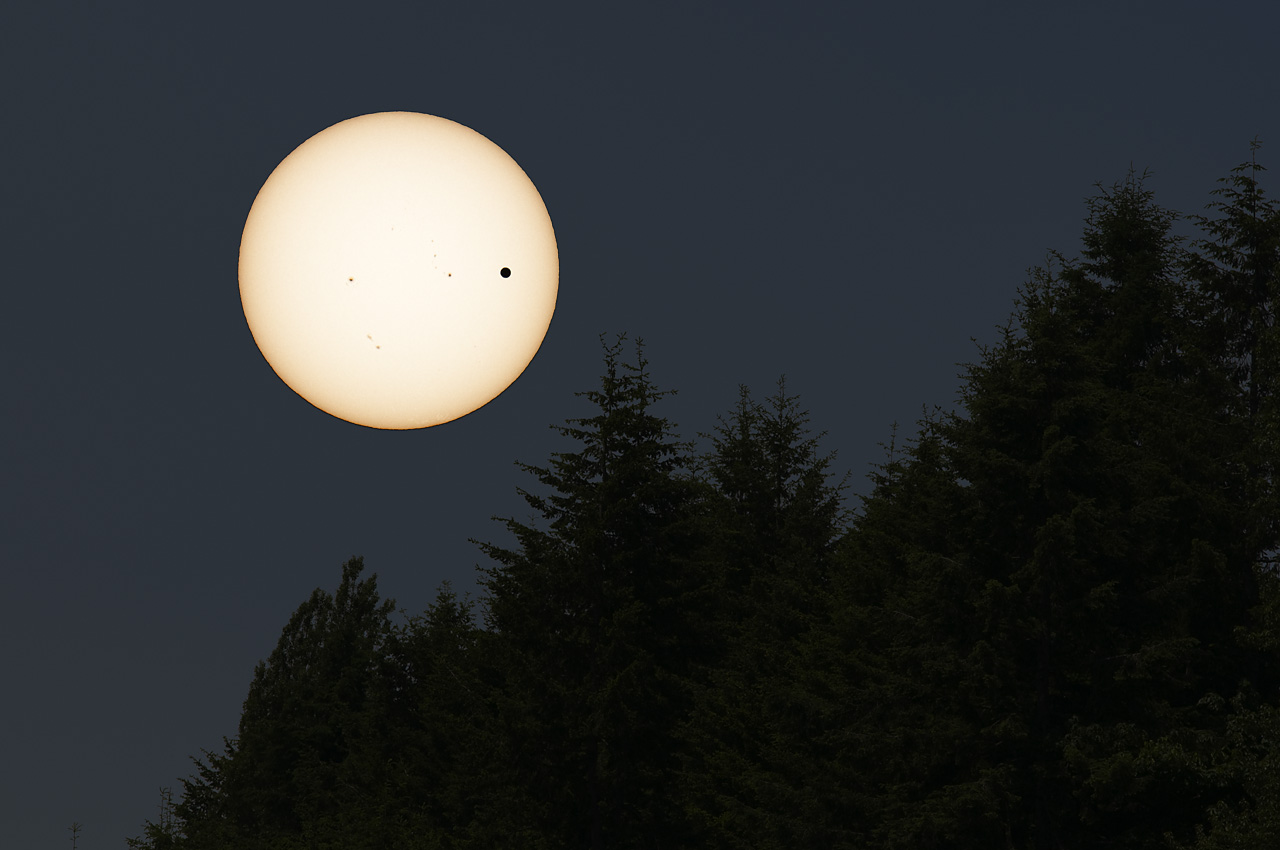https://apod.nasa.gov/apod/astropix.html
Tomorrow, Nov. 11th, the planet Mercury will pass between Earth and the Sun, appearing to take a leisurely stroll across the Sun over a period of about 5.5 hours. Unfortunately, it is likely to be cloudy here, and even it it isn’t, this “transit” as it is called will be more than half over by the time the Sun comes up. But on the East coast people will get to see most of it, weather permitting.
Because Mercury and Venus are closer to the Sun than Earth is, we get to see them somewhat differently than we do the other planets. In addition to sometimes passing in front of the Sun, Mercury and Venus are both sometimes seen as “crescents”, just like the Moon. Since Mercury is the closest planet to the Sun, it transits more frequently than Venus, although the pattern is complicated. There was another Mercury transit in May of 2016, but the next one won’t be until 2032. We had a Venus Transit in 2004, and again in 2012, but the next one won’t be until 2117.
To view such transits you need the same kind of eye protection you would for any Sun viewing, such as the glasses that were widely distributed for the 2017 eclipse (you still have them somewhere, right?). But if you don’t get to see it, you can hold out for 2032. I hope to still be around then!
Also, “The Mercury Transit” would be a good name for a jazz vocal group. Or an even better name for the transportation system in the fictional town of Mercury.
